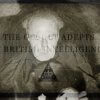In The Women Who Flew for Hitler, Clare Mulley unveils the intertwined yet contrasting lives of Hanna Reitsch and Melitta von Stauffenberg, two of Nazi Germany’s female test pilots. These two women, while sharing a passion for flying and a commitment to their country, could not have been more different in their views and moral convictions. Mulley’s book is a thrilling exploration of ambition, loyalty, and the ethical dilemmas faced by individuals in extraordinary circumstances.
The Sky-High Rivalry Between Hanna and Melitta
Hanna Reitsch, known for her unyielding ambition, was the first woman to fly a helicopter, an achievement that skyrocketed her fame. A fervent Nazi supporter, Hanna held a near-mythical view of Hitler and believed in the glory of the Reich. Her enthusiasm for the Nazi regime was matched by her audacious flying stunts, including testing experimental aircraft like the rocket-powered Me 163 Komet. Hanna’s approach to flying was one of thrill-seeking abandon, driven by a sense of divine destiny in the skies. In her own words, she once said, “Only in the air can I find peace, above all that is small and inconsequential.”
On the other hand, Melitta von Stauffenberg, who was of Jewish descent, harbored a deep sense of patriotism but viewed the Nazis with skepticism and growing disillusionment. A brilliant engineer and test pilot, she contributed to the development of dive-bombing technology for the Luftwaffe. Melitta’s commitment to Germany was one of duty rather than blind allegiance. Despite her reservations about the regime, she continued her work, aware that her unique skills in aeronautical engineering were invaluable. Mulley recounts Melitta’s approach with reverence: “For Melitta, flying was not a game or an expression of personal freedom. It was a commitment, and with it came responsibility.”
A Tale of Survival, Choices, and Nuance
Mulley’s narrative explores the critical moments when both women faced life-defining choices. As the war progressed, Hanna remained loyal to Hitler, even volunteering for a suicide mission. Meanwhile, Melitta became entwined in the Stauffenberg plot to assassinate Hitler. This divergence reflects a powerful examination of personal agency and moral courage. While Hanna may initially appear as the “bad” character due to her unwavering support for the Nazi regime, Mulley paints a more complex picture. She emphasizes that Hanna was driven by a fierce sense of duty and patriotism, albeit misdirected, and reveals her human vulnerabilities.
Conversely, Melitta’s disillusionment with the Nazis positions her as the morally sympathetic figure, yet Mulley refrains from casting her as purely heroic. Both women were ultimately shaped by their unique backgrounds and convictions, making them multifaceted characters whose lives raise thought-provoking questions about loyalty, patriotism, and the capacity for moral judgment under extraordinary circumstances. Mulley leaves room for readers to form their own interpretations, avoiding a clear-cut good versus evil narrative.
Why The Women Who Flew for Hitler Is a Must-Read
The Women Who Flew for Hitler not only brings to light the fascinating lives of two pioneering aviators but also presents readers with the moral complexities of loyalty, honor, and duty in wartime. For those interested in World War II history, aviation, or stories that provoke deep ethical considerations, this book offers a thought-provoking and thrilling read. It doesn’t dictate a black-and-white moral conclusion but instead challenges readers to reflect on the nuances of human character under pressure.




